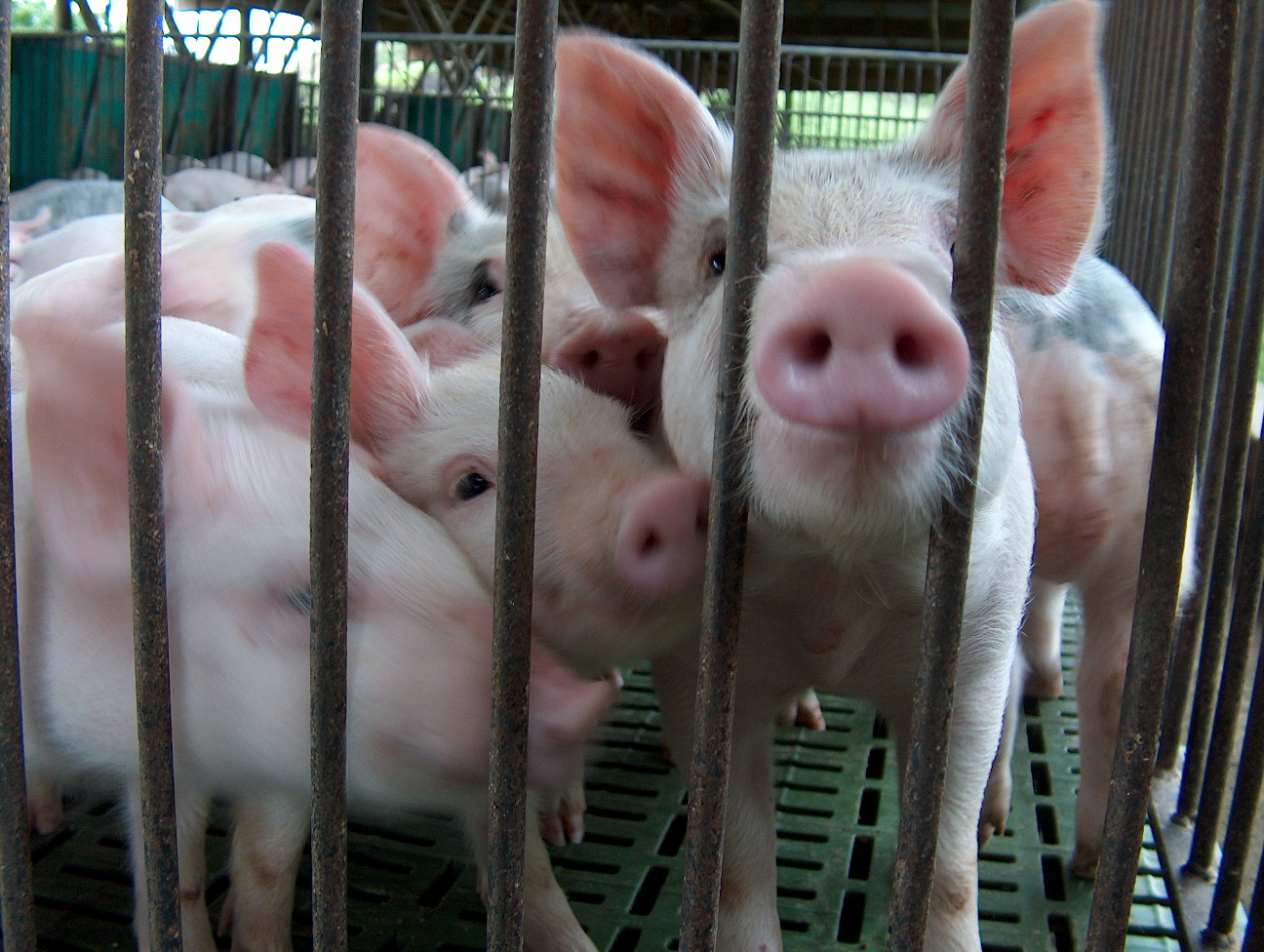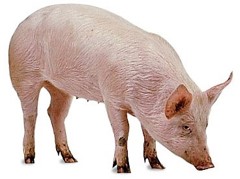
PPA ASF pig sampling Kenya (c) Sam Kahariri (DVS Kenya) 2021
This inaugural meeting was organised as a result of the adoption in October 2021 of the terms of reference for the Africa-region Standing Group of Experts (SGE) for African Swine Fever (ASF) by the 10th Regional Steering Committee (RSC-10) of the GF-TADs for Africa. The SGE-ASF for Africa aims to promote regular exchange of information and best practices among concerned national veterinary authorities, international and national experts, and the private sector.
Overall, 70 individuals registered for the meeting and – over the two days – 65 attended. Amongst the OIE Delegates (founding Members), one can mention Honoré Nlemba – Mabela (Democratic Republic of Congo), Vessaly Kallo (Cote d’Ivoire), Botlhe Michael Modisane (South Africa), Daniel Batasse Batawui (Togo), Anne-Rose Ademun (Uganda) and the new OIE Delegate from Nigeria, Dr Maimuna Habib.
Picture (c) S. Kahariri (DVS Kenya) 2021
From the OIE Delegates, attending as observers and possible future Members were : Ana Lina Pereira (Cabo Verde) and Drissa Coulibaly (Mali). Also in attendance were ASF subject-matter experts, AU-IBAR, AU-PANVAC, ECOWAS (RAHC), FAO and OIE.
The inaugural meeting was opened by Dr Nick Nwankpa, acting Director of AU-IBAR and Director of AU-PANVAC (and Chair of the GF-TADs for Africa Regional Steering Committee), Dr Karim Tounkara, OIE Representative Regional Representation for Africa, Secretary of the GF-TADs for Africa (Regional Steering Committee) and Dr Charles Bebay, Vice-President of the GF-TADs for Africa RSC, Regional Manager ECTAD East Africa of the FAO, all of whom delivered remarks highlighting the need for closer collaboration between member countries and that this Standing Group of Experts could serve as model for all the other TADs programmes in the region.
The meeting began with an introduction of the terms of reference of the SGE by Dr Patrick Bastiaensen, on behlf of the Secretary of the GF-TADs for Africa, followed by a presentation on the Global Initiative for African swine fever and its activities by Dr Andriy Rozstalnyy, Co-Chair of the GF-TADs ASF Working Group (FAO).
Dr Paolo Tizzani of the OIE World Animal Health Information and Analysis Department (WAHIAD) presented an overview of the global distribution of ASF and trends, based on OIE-WAHIS reporting. Most of the founding member countries presented an overview of the ASF situation within their respective countries as follows :
Picture (c) P. Bastiaensen (oie) 2007.
Sharing some of the lessons learnt from the work of the SGEs in other regions, presentations were delivered by Dr Bernard Van Goethem, President of the RSC for Europe (and Director Animal Health at the European Commission’s DG-SANTE, Brussels) and Dr Caitlin Holley, Programme Officer at the OIE Regional Representation for Asia and the Pacific and officer-in-charge of the Regional GF-TADs Secretariat for the SGE-ASF for Asia-Pacific (Tokyo).
On the second day, Dr Fredrick Kivaria, Regional Epidemiologist of FAO-ECTAD Eastern Africa, presented an update on the ongoing revision of the 2017 Regional strategy for the control of African swine fever in Africa.
Dr Sharon Tsigadi of Farmer’s Choice Ltd in Kenya shared the private sector perspective and feedback on the draft work plan while Dr Livio Heath, Designated Expert of the OIE ASF Reference Laboratory at the Onderstepoort facility in South Africa presented the diagnostic challenges with regards to ASF. The meeting ended with two presentations of the relevant ASF portals on the global and regional GF-TADs websites
Through the presentations by countries and subject-matter experts, as well as sharing of experiences from the two SGE-ASF for Asia-Pacific, and Europe, the Members of the SGE-ASF for Africa identified the following challenges faced by the region in ASF control:
Piglet (ASF), Porcelet (PPA)
Resulting from the various presentations made on day one and the comments from the private sector representative, Dr Sharon Tsigadi (Farmers’ Choice Ltd KE), the following considerations were drafted, and technical items or topics identified, based on country presentations, regional presentations (Europe and Asia-Pacific) and the comments of (private sector) representatives and scientific experts, to guide the work of the SGE over the next 12 – 24 months, depending on the frequency of meetings —
Considering:
…the following technical items or topics were identified (in order of priority and logic/sequence of implementation) with comments (where appropriate) on possible secondary items or topics, some of which apply to several identified topics:
| 1. Value chains | Understanding the production features and value chains in Africa
|
|
| 2. Biosecurity | Strengthen biosecurity for the control of ASF along the value chain
|
|
| 3. Surveillance | Enhanced surveillance and diagnostic capabilities for ASF control
|
|
| 4. Outbreak management | Outbreak response capability and capacity for ASF control
|
|
| 5. Socio-economics | Regional ASF risk assessment and socio-economic impact for effective prevention, control and evidence-based advocacy
|
|
| 6. Cross-border | Official border control measures and informal cross-border transit and trade of pigs and pig products, leading to spread of ASF |
|
| 7. Policy | Policy issues, control strategies and National and Regional Strategic Plans
|
|
| 8. Transparency | Issues related to transparency and sharing of information between neighbouring countries and with trading partners
|
|
Regarding the frequency and hosting of upcoming meetings, it was clarified that :
Furthermore, a dedicated SGE page has been opened of the GF-TADs for Africa website in order to facilitate the sharing of information : African Swine Fever – Standing Group of Experts (SGE) – OIE – Africa



